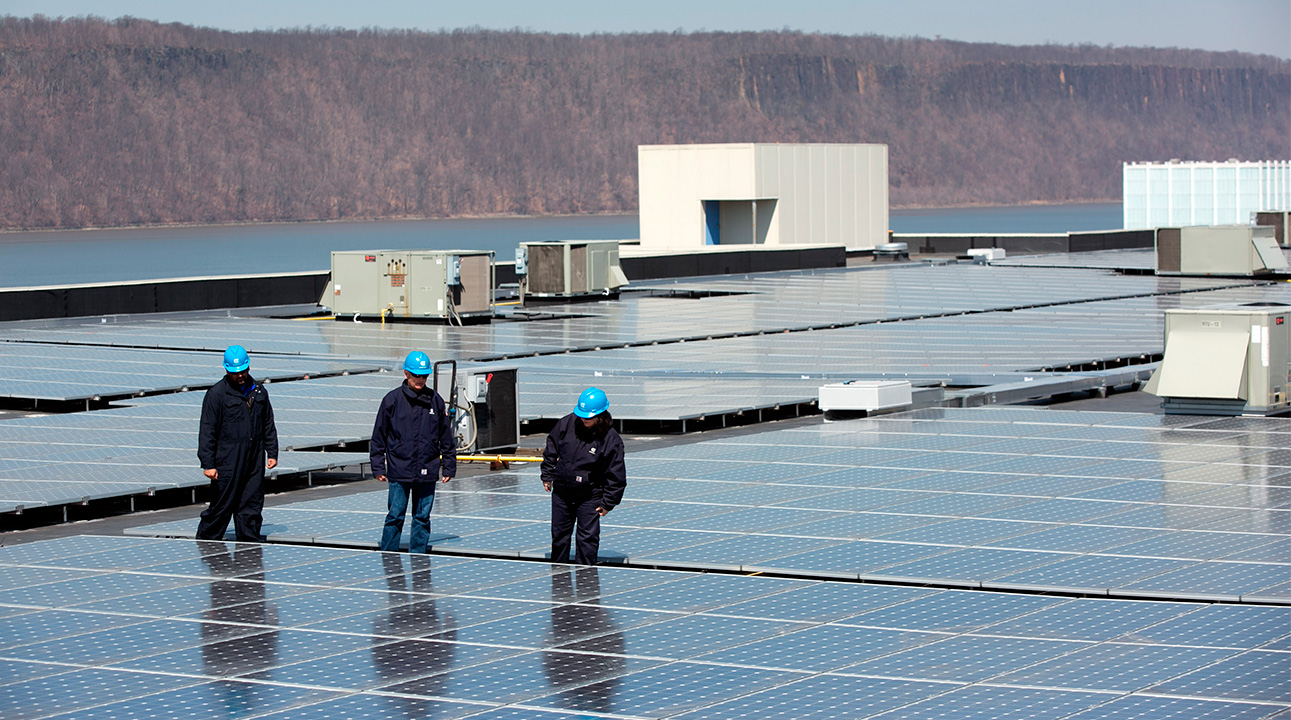
Con Edison’s strategy is to deliver reliable energy services and provide a stable foundation for supporting New York’s economy. At Con Edison, we have two strategic documents – our Integrated Long Range Plan and our Sustainability Strategy. These companion documents work together to identify ways that we can add value for all of our stakeholders through the services we provide, our different business models, and our commitment to excellence in all that we do.
 In an effort to better plan for the next 20 years, Con Edison has developed an Integrated Long Range Plan (ILRP), the first iteration of which was published in 2012. While flexible to the evolution of our industry and technologies, the ILRP outlines how the utilities will use an integrated approach across our electric, gas, and steam businesses to meet the needs of our stakeholders as we work to provide safe, reliable, clean, innovative, and cost-effective energy services for a sustainable future.
In an effort to better plan for the next 20 years, Con Edison has developed an Integrated Long Range Plan (ILRP), the first iteration of which was published in 2012. While flexible to the evolution of our industry and technologies, the ILRP outlines how the utilities will use an integrated approach across our electric, gas, and steam businesses to meet the needs of our stakeholders as we work to provide safe, reliable, clean, innovative, and cost-effective energy services for a sustainable future.
There are three key objectives of the ILRP:
As we strive to meet these goals, we will continue to focus on the importance of improving customer service, meeting governmental and our own internal environmental standards, and maintaining reliability and safety.
The company continues to update its long-range plans to reflect changes in our operating environment and the needs of our customers, as well as growing adoption of distributed energy resources. To learn more about Con Edison’s long-term goals and our plan to reach them, please read the full text of the Integrated Long Range Plan.

Our 2014 sustainability effort focused on ensuring a zero-harm environment to the public, our employees, and the environment. The six principles below guide our efforts on safety and sustainability.
Business Value
Environment
Community
The stories, information, and data presented throughout this report will highlight the progress that we’ve made in these areas, as well as outline our focus for continued improvement in the coming years.
As a key step of our strategy redesign, we worked to identify what aspects we deem material to the sustainability discussion for Con Edison. Our work began using the EPRI 2013 Technical Report Material Sustainability Issues for the North American Electric Power Industry. This report outlines 15 material sustainability issues for the industry as a whole. These issues were determined through a literature review, nearly four dozen interviews with utilities and stakeholder organizations, and a survey of nearly 300 people from utilities or stakeholder organizations. Using the material issues identified in this report as the basis for our work, we then overlaid our own Con Edison and service territory-specific policies, procedures, plans, and goals. As a result of that process, we developed the following list of 15 Key Sustainability Aspects for CEI:
It should be noted that these issues were identified using the definition of materiality from the EPRI report: “…a ‘material’ sustainability issue is an environmental, social, and/or economic issue that has the potential to impact the long-term viability of electric utilities and/or their stakeholders. Importantly, this is different from but related to financial materiality, which is a threshold for influencing the economic decisions of investors. Material sustainability issues reflect a wider range of stakeholders and are not limited to topics that have a significant financial impact on the organization.”
The icons above will be used to identify corresponding KSAs throughout each section of this report. For information on those issues the company has deemed financially material, please see the section on Enterprise Risks.
Our goal for 2014 is to evaluate our approach to these issues and how we might be able to better engage our stakeholders in the discussion of materiality. We are also now looking toward better defining metrics in each of these areas to provide a more transparent and consistent way of gauging our progress.